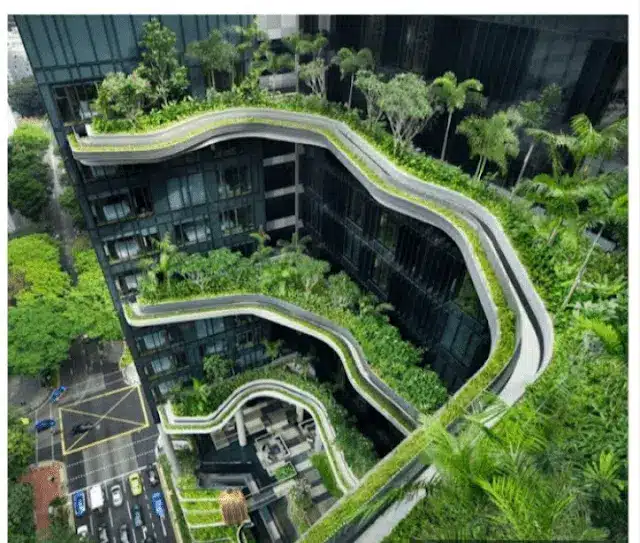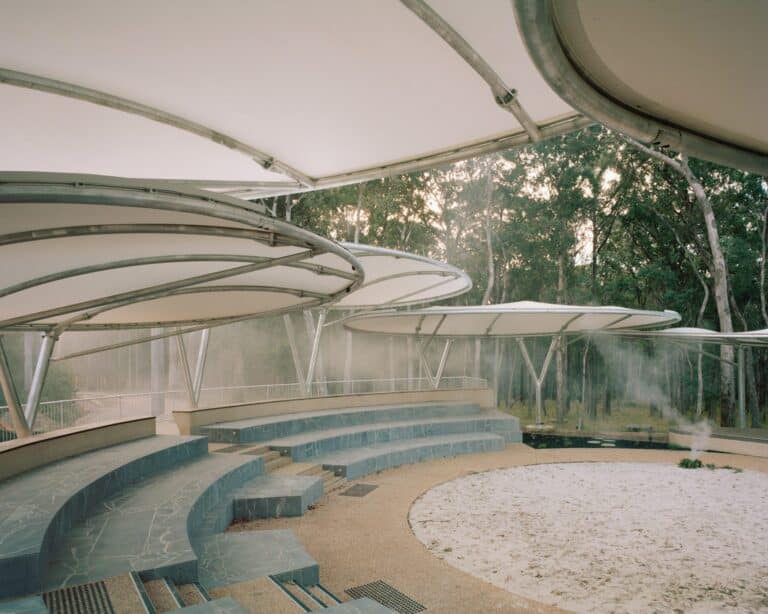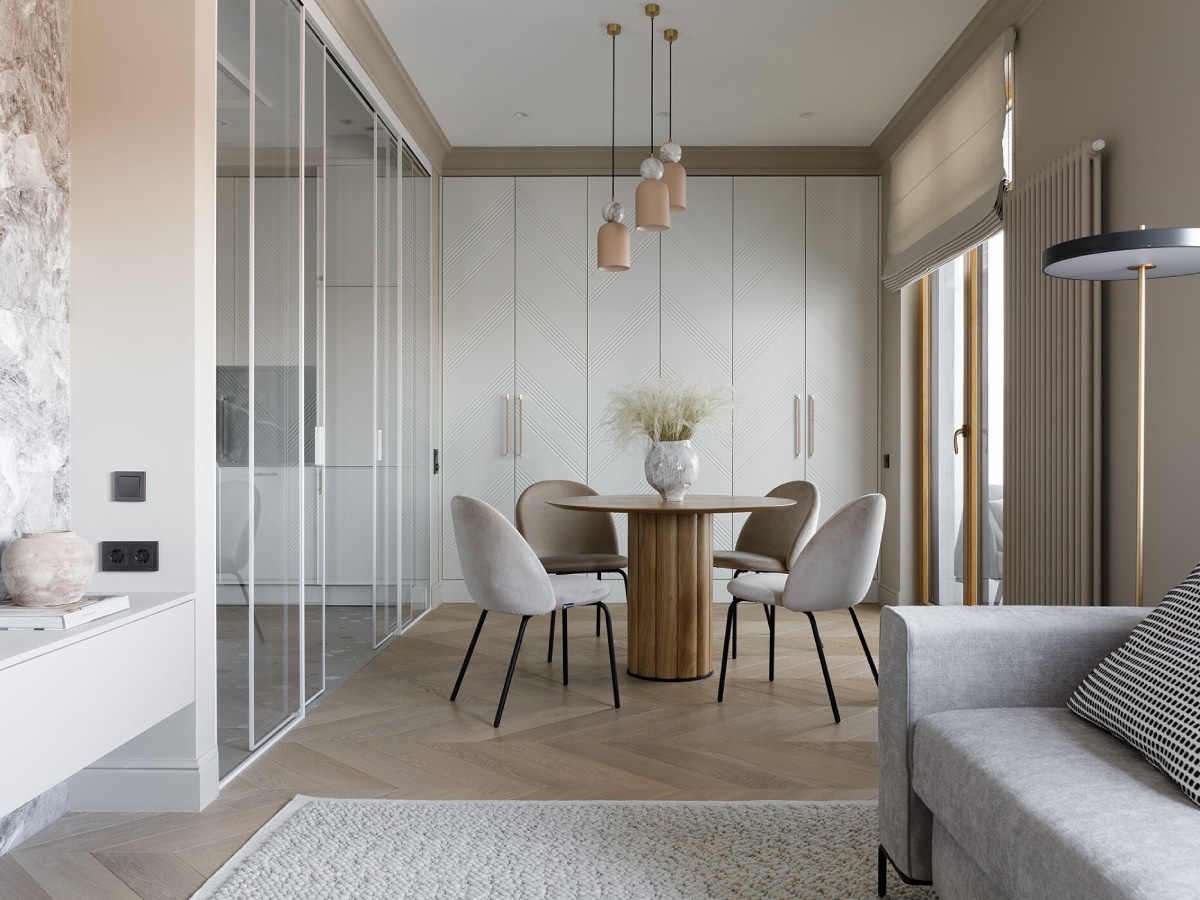Green Architecture and Its Importance in Our Lives
In light of the growing environmental challenges facing our planet, green architecture—also known as sustainable architecture or العمارة الخضراء—has emerged as one of the most effective solutions to address ecological and economic concerns. This approach focuses on designing and constructing buildings that minimize negative environmental impacts, conserve natural resources, and enhance human comfort.
In this article, we will explore the concept of green architecture, its core elements, benefits compared to traditional buildings, and how traditional Arab architecture already embodied many principles of sustainability long before the term became popular. We’ll also include a critical perspective from ArchUp regarding the challenges and opportunities of implementing green design in the Arab world.

What Is Green Architecture?
Green architecture refers to a building and design philosophy that emphasizes the efficient use of natural resources, environmentally friendly materials, and energy-efficient systems. The goal is to reduce the environmental footprint of construction while improving indoor air quality, thermal comfort, and overall occupant well-being.
It’s not just about adding solar panels or green roofs—it’s a comprehensive approach that considers everything from site selection and material sourcing to energy consumption and waste management throughout the building’s lifecycle.
Key Elements of Green Architecture
To qualify as truly “green,” a building must incorporate several essential components:
| Element | Description |
|---|---|
| Sustainable Design | Integration of electrical, mechanical, and structural engineering with the surrounding environment. |
| Site Respect | Avoiding major alterations to the land so that it can return to its original state after the building is removed. |
| Reduced Use of Non-Renewable Resources | Selection of recyclable, reusable materials with low emissions. |
| Energy Efficiency | Minimizing reliance on fossil fuels and incorporating renewable energy sources like solar and wind. |
| Climate Adaptation | Designing buildings to harmonize with local climate conditions, using passive strategies for heating, cooling, and lighting. |

Benefits of Green Buildings vs. Traditional Ones
Studies show that green buildings significantly outperform conventional structures in terms of efficiency and sustainability:
| Benefit | Estimated Improvement |
|---|---|
| Energy Consumption | 24–50% less |
| CO₂ Emissions | 33–38% reduction |
| Water Usage | Up to 40% less |
| Solid Waste Generation | 70% less |
| Operating Costs | 8–9% lower |
| Annual Energy Use | Less than 100 kWh/m²/year |
These figures highlight the long-term economic and environmental advantages of adopting green building practices.

Traditional Arab Architecture: A Historical Model of Sustainability
Long before modern technology introduced electric cooling and artificial lighting, traditional Arab architecture was inherently sustainable. Features such as mashrabiya (latticed wooden screens), central courtyards , and thick walls were designed to provide natural ventilation, insulation, and daylighting.
For example:
“The mashrabiya serves both aesthetic and functional purposes by filtering sunlight and allowing airflow without compromising privacy.”
— Ministry of Energy and Industry, Saudi Arabia
Despite these early examples of sustainable design, rapid urbanization and the adoption of Western-style construction methods have led to a decline in these practices. Today, however, there is renewed interest in integrating traditional wisdom with modern green technologies.

ArchUp’s Perspective: Realistic Analysis and Constructive Criticism
ArchUp believes that the growing interest in green architecture is a positive trend, but there are still significant barriers to widespread implementation in the Arab region:
- High Initial Costs : While green buildings offer long-term savings, many developers remain hesitant due to higher upfront investment.
- Lack of Awareness : There is still a gap in understanding among professionals and the public regarding what true sustainability entails.
- Weak Regulations : Few countries enforce mandatory green building codes, leading to inconsistent application of sustainable principles.
We argue that progress begins with education, stronger government policies, and a shift in priorities—from focusing solely on aesthetics and size to valuing efficiency, resilience, and long-term impact.
Frequently Asked Questions (FAQ)
| Question | Answer |
|---|---|
| What is the difference between green architecture and traditional architecture? | Green architecture prioritizes sustainability, energy efficiency, and occupant health, while traditional architecture may overlook these aspects. |
| Are green buildings more expensive? | Yes, initial costs can be higher, but they save money over time through reduced utility bills and maintenance. |
| Can green architecture be applied everywhere? | Yes, but designs must adapt to local climates and cultural contexts. |
| Does green architecture require advanced technology? | Not always. Many sustainable strategies rely on smart design and improved traditional techniques. |

Summary Table of Key Points
| Aspect | Summary |
|---|---|
| Definition | Building approach that minimizes environmental impact and promotes occupant health. |
| Core Elements | Sustainable design, site respect, energy efficiency, and use of eco-friendly materials. |
| Benefits | Lower energy and water use, reduced emissions, cost savings, and healthier indoor environments. |
| Traditional Roots | Arab architecture historically used passive cooling, shading, and insulation effectively. |
| Challenges | High costs, lack of awareness, and weak regulatory frameworks. |
References
- Ministry of Energy and Industry, Saudi Arabia
- United Nations Sustainable Development Goals (UNSD)
- U.S. Green Building Council (USGBC)







